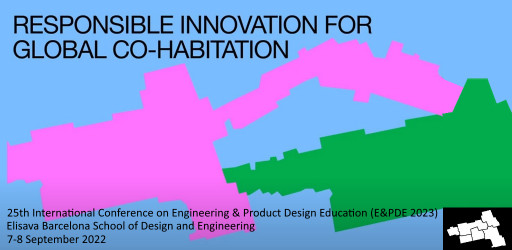Type:
Year:
2023
Editor:
Buck, Lyndon; Grierson, Hilary; Bohemia, Erik
Author:
Series:
E&PDE
Institution:
University of Cincinnati, USA; University of Montreal, Canada
Section:
The potential of interdisciplinary activities to foster responsible innovation
DOI number:
ISBN:
978-1-912254-19-4
Abstract:
For the past century, cities evolved around car-centricity, where cars existed in uni-disciplinary isolation from urban planning in unchanging street layouts. Recently, urban planners and new paradigms are transitioning cities away from car-centrism to enable inter-modal streets for vehicles that exist today (e.g. bicycles, e-scooters, cars). Simultaneously, new types of vehicles are being designed for future cities, particularly in micromobility, which must be considered as new street layouts are designed. Therefore, new tools to communicate design concepts are required to ensure a multidisciplinary approach between mobility designers and urban planners. In mobility design, to develop vehicle concepts, students traditionally use digital (CAD) and physical prototyping, with virtual and augmented reality (AR and VR) levels recently emerging. These design concept prototypes have different degrees of fidelity, lower early in the process (e.g. small-scale appearance models or full-scale functional mock-ups), while progressively becoming more faithful to the final design (e.g. full-scale appearance models), particularly when creating the final showcase of the design concept. In academia, final mobility design showcases traditionally consist of vehicle-centric presentations where student designers prepare a verbal explanation, while audiences (usually other mobility designers) play a spectator role. The presentation consists of large posters and/or on-screen slide shows (including images, text, and animations), which can include a physical prototype (small-scale high-fidelity appearance model or low-fidelity full-scale mockup). Moreover, audiences are limited to 2D graphic and 3D physical off-scale representations of the vehicle concept with little context. After the presentation, they provide feedback, mostly addressing the vehicle’s design. VR prototypes are emerging for final showcases in mobility design education and allow audiences to transition from spectators to active participants, capable of experiencing aspects of the concept like materiality, user-interactions, and urban context around the vehicle. However, the lack of physicality of this prototyping level can be disorienting because of issues with scale, position, and visibility of the real environment and people. Thus, the low-fidelity physical level is often preferred over the virtual, even when higher-fidelity aspects of the design and the urban context are lost. AR serves as a bridge where the physical mockup audience members are sitting on, matches the environment they can see and touch through the AR cameras, and has VR geometry and interactivity overlayed on top, essentially creating a multi-level prototype experience. This approach also allows mobility designers to showcase their vehicle solutions and planners to contextualize the built environment in a seamless transition between both disciplines. Even though existing prototyping methodologies intend to bridge the physicality and virtuality of design concepts, none use the multi-level prototyping approach of AR (low-fidelity) in addition to VR (mid-fidelity) and 1:1 physical (low-fidelity) to showcase final design concepts to multidisciplinary stakeholders. This paper uses the case study of the final showcase of a Future Mobility Design Undergraduate studio focusing on micromobility. Two student micromobility concepts are demonstrated, and the findings are concluded based on the testimony of stakeholders in the AR/VR and urban development industries, who attended the event and tested the experience.
Keywords:





